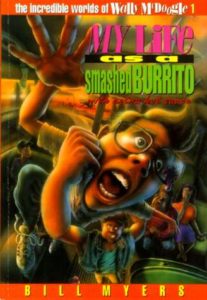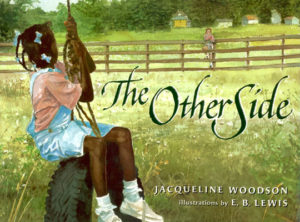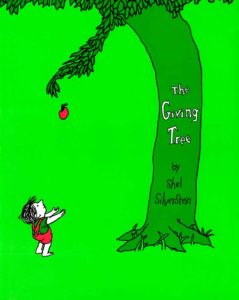Books Are a Teacher’s Best Friend

Last year, I took a course called Teaching Language and The Arts in the Junior Division and our professor expressed her adoration for using picture books in the classroom. The wonderful combination of visuals and textual stories that picture books offer is a valuable literary experience. However, picture books do not have to be used exclusively during literacy; they provide valuable learning opportunities in a number of disciplines.
Our professor asked us to explore the world of picture books, in addition to novels that could be used cross-curriculum, and create an annotated document containing information about three different books. Together with those provided by classmates, a resource bank of picture books and novels was created! Below is information about the three books I happened upon:
Author: Jacqueline Woodson
Illustrator: E. B. Lewis
Genre: Picture Book
Subject Area(s): Language, History (Social Studies), Art
Grade(s): 4 – 8
Summary: The Other Side is a story of friendship across a racial divide. Clover is a young, African American girl who lives beside a fence that separates her town into a white section and a black section. Her mother tells her that she is not allowed to climb over the fence because it is unsafe on the other side. Clover regularly plays with a group of friends, in view of a lonely white girl. Eventually, Clover starts a conversation with the other girl, Annie, thus initiating their friendship. They both recognize that they can’t cross the fence, but they get around the rules by sitting on top of the fence together, an area deemed no man’s land.
Significance: This book is a great resource when it comes to introducing complex subject matters in an engaging and creative way. The Other Side presents the history of racism, yet it takes a positive approach to a heavy topic. This story can be used in a number of different subject areas, including Language, History, and Art. The pictures can spark a Visual Arts lesson focused on analyzing the images (What types of images were used? Why did the illustrator use that type of art?), and exploring the cultural contexts of the art. Many discussion topics can be explored after reading the book, such as the history of racism and the role of each character in portraying the significance of the subject matter, among others. These discussions can lead to assessments that fall under a number of Language and History overall expectations.

Title: My Life as a Smashed Burrito with Extra Hot Sauce
Author: Bill Myers
Illustrator: n/a
Genre: Novel
Subject Area(s): Language, Religion
Grade(s): 4 – 8
Summary: As the first novel in the Incredible Worlds of Wally McDoogle series, we are introduced to twelve-year-old Wally McDoogle. Wally dreams of being a writer, being a superhero, and most importantly, writing about a superhero. His father registers Wally for camp, insisting it will make him a “real man”. Wally’s fears come true before he even makes it to Camp Wahkah Wahkah: he gets picked up and thrown against the roof of the bus by Gary the Gorilla, a humongous bully. As Wally continually gets bullied for being dork-oid, how he writes a story about a superhero defeating a villain, closely resembling the situations he is facing in real life.
Significance: This novel is a great resource for teachers in the Catholic school board that are looking for an age-appropriate story that teaches valuable life-lessons. Written with a comedic approach, Wally is a relatable character for many students in elementary school. He references God and the values and morals used to overcome tough situations. This provides a way to introduce students to morality, consciousness, and religion. Wally also dreams of becoming a writer and is in the process of writing his own superhero story. This concept alone presents many opportunities for further study, such as writing their own life stories in the creative outlook of a superhero character. There are 27 books in the series, which presents an interesting opportunity for group collaboration: if each student is able to read a different book in the series, the class can engage in Knowledge-Building Circles discussing the similarities and differences among the lessons learned in each of the novels.
Author: Shel Silverstein
Illustrator: Shel Silverstein
Genre: Picture book
Subject Area(s): Language, Religion, Art, Social Studies
Grade(s): 1 – 8
Summary: The book tells the story of a boy and an apple tree who are able to communicate with one another. As a child, the boy enjoys playing with the tree, climbing her trunk, swinging from her branches, and eating her apples. As the boy grows older, he uses the tree for purposes other than play. As a teenager, he picks and sells the tree’s apples to make money. In adulthood, the boy cuts the branches off of the tree and takes them away to build a house. When the middle aged boy wants a boat, the tree allows him to cut its trunk to make a boat. The boy returns to the tree as an elderly man, however, the tree tells him that it has nothing left to give. Surprisingly, the boy only wants “a quiet place to sit and rest,” which the tree’s remaining stump can provide. After every occurrence of giving throughout the entire story, the story reads: “And the tree was happy.”
Significance: As both the author and illustrator of The Giving Tree, Shel Silverstein serves as an example of cross-curricular connections. This story at its very essence details a relationship built on selflessly giving what we have to others and not expecting anything in return. In the upper elementary grades, this relationship can be interpreted and explored in many different ways: a parent and their child, God and humanity, the environment and humans, and two friends. Whether the picture book is treated as an introductory hook to a lesson or the basis of a lesson, these relationships can lead to discussions in a number of different subject areas, such as Language, Religion, and Social Studies. The simplicity of the illustrations allows the reader to internalize the story without being distracted by the images. The connection of the images to the plot of the story would make for a great Visual Arts discussion, and the lessons gathered from the story can lead into other areas of The Arts (Music, Drama, and Dance).

